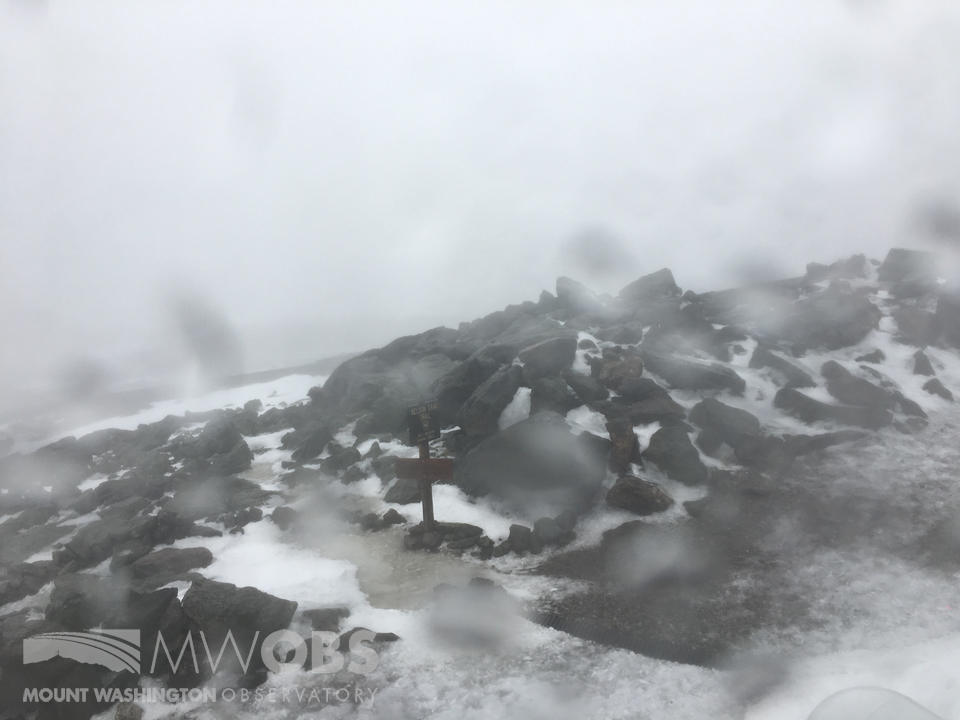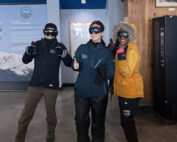From the Mountains to the Oceans, in Search of Fog
2018-01-12 15:12:16.000 – Taylor Regan, Weather Observer
Up on the summit, weather observers are no strangers to fog. In fact, we see the stuff every two out of three days on average, limiting our otherwise remarkable 130 mile visibility to sometimes a matter of feet. But did you know there isn’t just one type of fog? In fact, there are five common types of fog: radiation, rain-induced, advection, upslope, and steam fog.
Last week, while the summit (and all of New England) was a veritable icebox, I happened to be offshift, and took the opportunity to explore a bit, searching the seacoast for a phenomenon known as sea smoke, something more commonly found in the Arctic.
Sea smoke is a term used to describe a variant of steam or evaporation fog. Opposed to advection fog, which I’ll describe later, evaporation fog occurs when water vapor molecules are added to the air directly overhead to the point where the air cannot hold any more water. Added water is forced to condense and become fog. This type of fog is common after a rainstorm on a hot day or over lakes or large bodies of water when the water is much warmer than the air temperature. For sea smoke to occur, the air temperature needs to be much colder than the water, and with ocean temperatures currently in the upper 30s, that meant that the subzero temperatures recently seen across the Northeast were the perfect conditions to catch a glimpse of some sea smoke.
Ironically, back on the summit, temperatures climbed over 40 degrees, surpassing the daily highs during my off-week, spent over 100 miles south! And, in true Mount Washington fashion, we are currently solidly socked in the clouds, making for a soupy fog that seemingly eats the snow, demolishing our pristine snowpack in epic fashion.
Advection fog is generated when warm, moist air is transported over a colder surface (through a process called advection). The warmer air contains more moisture than cooler air, so, as it passes over the cold surface and cools, some of the water vapor is able to condense into water droplets (causing fog). Advection fog is also sometimes called “snow-eating” fog, because it can cause a robust snowpack to diminish almost in front of your eyes. The heat released when the water vapor condenses into liquid water droplets (fog) moving over the cold surface is enough to melt seven times as much snow!
Below is a comparison of our snowpack on January 3rd, with nearly two feet of snow and rime, to a photo taken today, the 12th of January. It looks like spring! From record low temps to record high temps, the mountain always has a surprise in store!
 Figure 3. Nelson Crag sign melted out looking east on January 12, 2018
Figure 3. Nelson Crag sign melted out looking east on January 12, 2018
Taylor Regan, Weather Observer
Team Flags Return for Seek the Peak’s 25th Anniversary
Team Flags Return for Seek the Peak's 25th Anniversary By MWOBS Staff Mount Washington Observatory is looking forward to continuing a much-loved tradition for Seek the Peak’s 25th Anniversary: Team flags. In inviting teams
Meet Summer Interns Zakiya, Max and Maddie
Meet Summer Interns Zakiya, Max and Maddie By MWOBS Staff We are excited to welcome six teammates to the summit of Mount Washington this summer! During their internship, these students and graduates will play
Saying Goodbye to the Summit
Saying Goodbye to the Summit By Alexis George After an extraordinary last three years working as a Weather Observer and Meteorologist, I am excited to pursue a different career. As sad I as am




